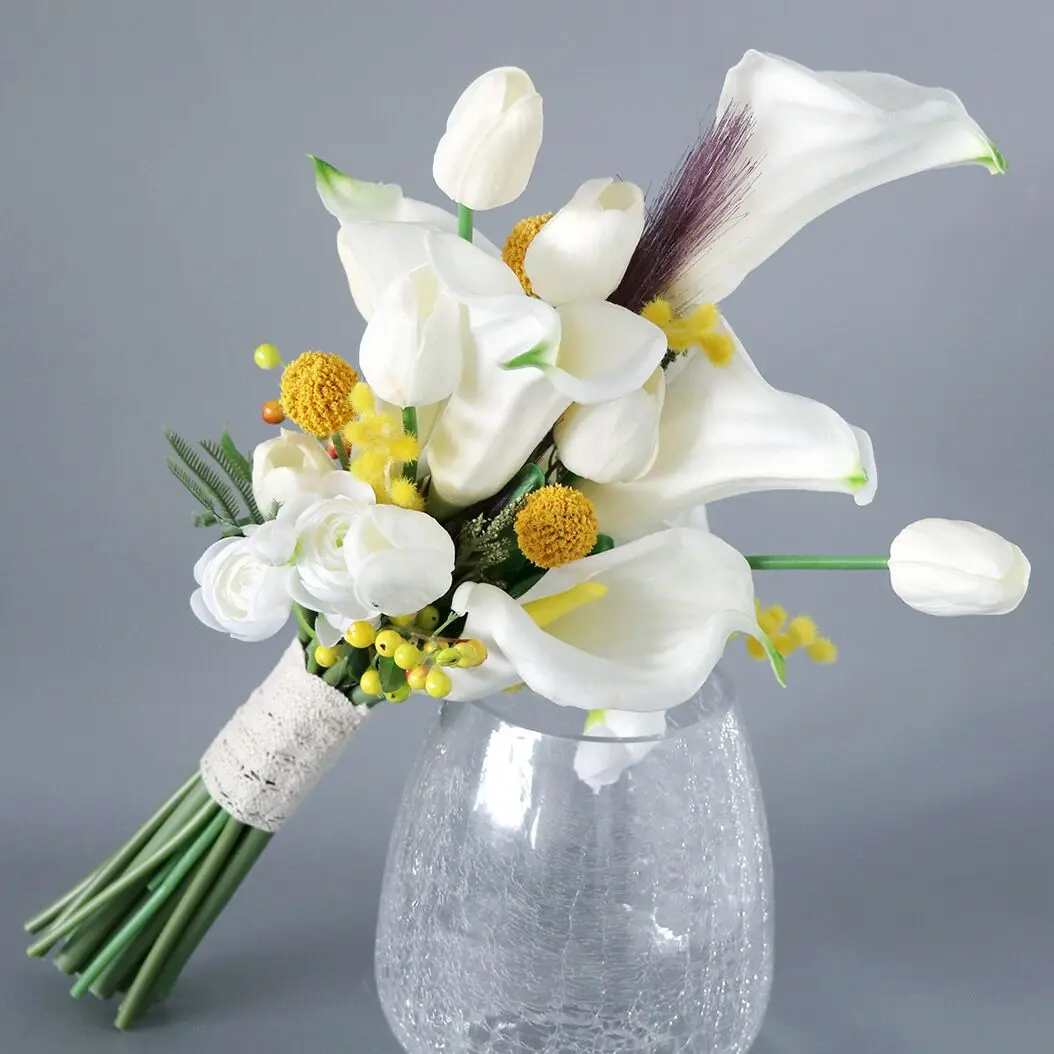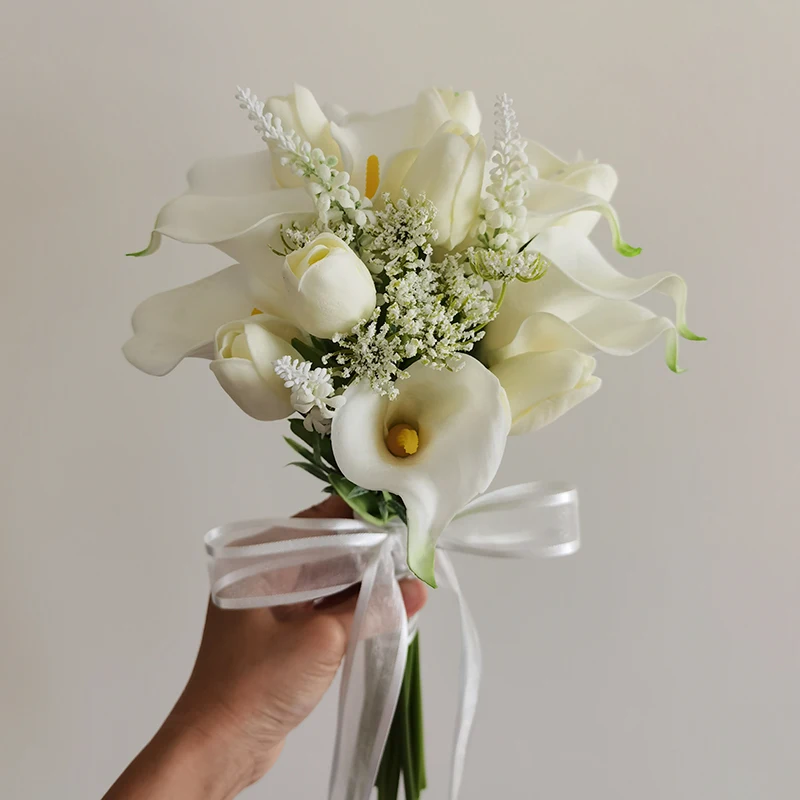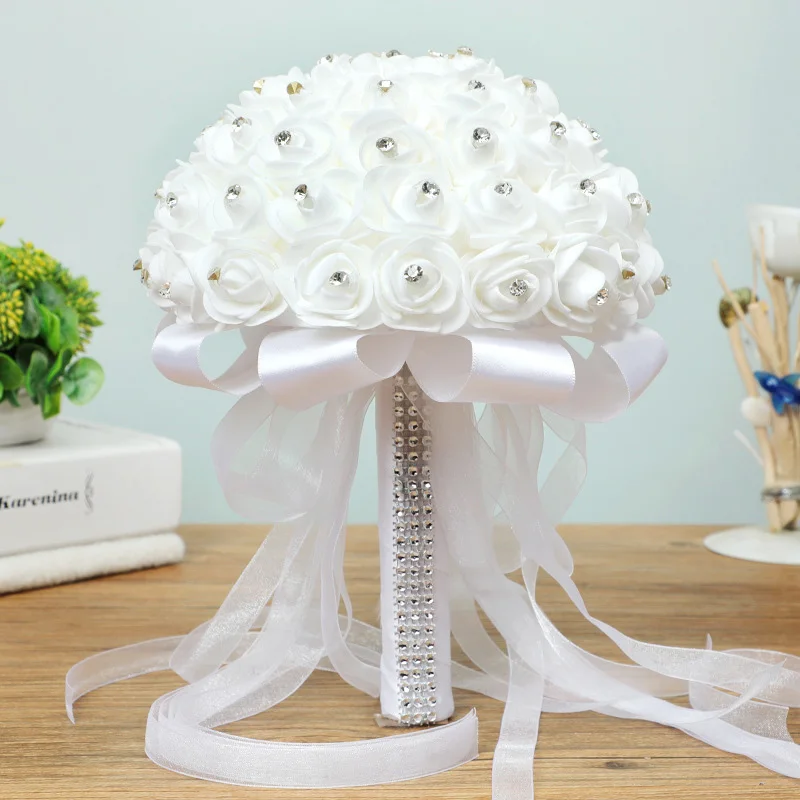I. Introduction

A. Importance of flowers in wedding decor
Weddings are beautiful celebrations of love and unity, and flowers play a crucial role in enhancing the overall atmosphere and ambiance. From the bouquet the bride carries down the aisle to the floral decorations adorning the ceremony and reception venues, flowers add a touch of elegance and beauty to any wedding. They’re not only visually appealing but also symbolize love, purity, and new beginnings.
B. Factors to consider when selecting wedding flowers
When it comes to choosing the perfect wedding flowers, there are several factors to consider. These include the wedding theme and style, the color scheme, the bride’s personal preferences, and budget. It’s essential to carefully think about these factors to ensure that the flowers harmonize with the overall wedding vision and create a cohesive and enchanting atmosphere.
II. Selecting the Right Wedding Flowers
A. Understanding the wedding theme and style
- Matching flowers to the overall theme
Before selecting the wedding flowers, it’s crucial to identify the theme and style of the wedding. Whether it’s a rustic outdoor wedding, a chic and modern affair, or a classic and timeless celebration, the flowers should complement the theme and overall aesthetics. For example, wildflowers and greenery would be perfect for a rustic wedding, while roses and elegant blooms would suit a classic and formal event. - Considering the color scheme
The color scheme of the wedding is another essential aspect to consider when selecting flowers. The flower colors should harmonize with the rest of the décor and the chosen color palette. For a monochromatic wedding, flowers in various shades of the chosen color can create depth and visual interest. Alternatively, contrasting colors can add a pop of vibrancy and create a visually striking display.
B. Choosing the Bouquet
- Determining the shape and size of the bouquet
The bouquet is a central feature of a bride’s ensemble, and it’s essential to choose one that complements her dress and body shape. The shape and size of the bouquet should also align with the overall style of the wedding. For instance, a cascading bouquet would be ideal for a formal and grand affair, while a hand-tied bouquet suits a more laid-back and bohemian wedding. - Selecting the appropriate flower types and arrangement
When selecting flowers for the bouquet, it’s important to consider the season and the availability of blooms. Some flowers may be more suitable for specific seasons, while others may be available all year round. Additionally, taking into account the bride’s personal preferences and any symbolic meaning attached to certain flowers can help create a more meaningful and personalized bouquet.
C. Floral Decorations for the Ceremony
- Selecting ceremony focal point flowers
The ceremony is the most significant part of a wedding, and selecting the right flowers for the focal points, such as the altar or the chuppah, is crucial. These flowers should be visually striking and create a beautiful backdrop for the couple’s vows. They can be placed on stands, arches, or pedestals to enhance their prominence and create a picture-perfect setting. -
Choosing aisle and pew decorations
Aisle and pew decorations add a touch of charm and elegance to the wedding ceremony. From flower petals scattered along the aisle to hanging garlands or small bouquets tied to the pew ends, there are numerous options to choose from. These decorations should be in line with the overall theme and color scheme and create a harmonious flow throughout the ceremony space.
III. Reception Floral Arrangements
A. Centerpieces and Table Decor
- Selecting flowers that complement the reception venue
When choosing flowers for centerpieces and table decor, it’s important to consider how they will work with the overall ambiance of the reception venue. Take note of the colors, style, and theme of the venue to select flowers that will enhance the space rather than clash with it. For example, a rustic barn venue may call for arrangements with wildflowers and natural elements, while a grand ballroom may require more formal and elaborate floral arrangements. - Matching arrangements to the table settings and ambiance
To ensure a cohesive look, it’s essential to match the floral arrangements to the table settings and overall ambiance of the reception. Consider the style of the tables, including the table linens, plates, and silverware. Opt for flowers that complement the colors and overall design of the tables. For an elegant and sophisticated ambiance, choose arrangements with roses, orchids, and other classic blooms. If the wedding has a more relaxed and informal vibe, consider mix-and-match wildflower centerpieces or arrangements with seasonal blooms.
B. Wedding Cake Flowers
- Determining the appropriate size and style of cake flowers
When incorporating flowers onto a wedding cake, it’s important to select blooms that are appropriate in size and style. Consider the size and shape of the cake tiers, as well as the style of the cake design. Delicate and small flowers, such as baby’s breath or miniature roses, work well for smaller cakes or minimalist designs. For larger cakes or more elaborate designs, choose larger blooms like peonies or dahlias. Be sure to consult with the cake baker to ensure that the flowers are food-safe and will not affect the taste or integrity of the cake. - Coordinating floral accents with the cake design
To create a cohesive look, coordinate the floral accents with the overall design of the wedding cake. Take inspiration from the colors, patterns, and textures of the cake to select coordinating flowers. For example, if the cake features delicate sugar flowers in pastel shades, choose fresh flowers that mirror the same colors and softness. If the cake has a modern geometric design, opt for bold and structured blooms like protea or succulents.
C. Other Decorative Floral Elements
- Incorporating flowers in the wedding signage and stationery To further enhance the wedding decor, consider incorporating flowers in the wedding signage and stationery. This can be done by using floral motifs, illustrations, or even pressed flowers. For example, the wedding invitation can feature a watercolor floral design, while the table numbers can be embellished with small dried flower buds. This cohesive floral theme throughout the wedding stationery will tie in with the overall floral decor.
- Utilizing hanging floral arrangements or flower walls as decorative features To create a stunning visual impact, consider incorporating hanging floral arrangements or flower walls as decorative features. Hanging floral arrangements can be suspended from the ceiling or beams, creating a magical and ethereal atmosphere. Flower walls, composed of lush blooms and foliage, can serve as a backdrop for the ceremony, photo booth, or dessert table. These eye-catching floral elements will surely leave a memorable impression on wedding guests.
IV. Seasonal Considerations

A. Flowers Available for Each Season
- Spring wedding flower options
In the spring, popular flower options include tulips, daffodils, peonies, cherry blossoms, and lilacs. These blooms are known for their vibrant colors and delicate, fresh scent, making them perfect for spring weddings. Incorporate these flowers into centerpieces, bouquets, and other floral arrangements to celebrate the beauty of the season. - Summer wedding flower options
For summer weddings, you can choose from a wide range of flowers, including roses, sunflowers, hydrangeas, dahlias, and zinnias. These bold and vibrant blooms are perfect for creating cheerful and lively arrangements. Pair them with fresh greenery for a lush and natural look that captures the essence of the summer season. - Fall wedding flower options
Fall weddings are known for their warm and rich color palettes, and the flowers used should reflect this. Consider using flowers such as dahlias, chrysanthemums, asters, and sunflowers in deep reds, oranges, and yellows to capture the essence of autumn. Combine these blooms with seasonal foliage like maple leaves or branches to create stunning fall-inspired floral arrangements. - Winter wedding flower options
Winter weddings call for flowers that can add a touch of elegance and romance to the cold season. Opt for blooms such as amaryllis, poinsettias, hellebores, and roses in shades of white, blush, and burgundy. Incorporate evergreen foliage, pinecones, and branches into the arrangements for a festive and wintry touch.
B. Budget-friendly Alternatives
- Choosing cost-effective flower options
If you’re working on a budget, there are plenty of cost-effective flower options to choose from. Consider using flowers such as carnations, daisies, baby’s breath, and alstroemerias, as they tend to be more affordable compared to other blooms. These flowers are versatile and can be used in various floral arrangements, such as centerpieces, bouquets, and boutonnieres. -
Incorporating greenery and non-floral elements for a budget-friendly approach
To save on costs, consider incorporating greenery and non-floral elements into your wedding decor. Greenery such as eucalyptus, ivy, ferns, or even herbs like rosemary can add a touch of freshness and texture to your arrangements without breaking the bank. Additionally, consider using non-floral elements like feathers, dried branches, or even succulents as unique and budget-friendly alternatives to traditional flowers. These elements can be incorporated into centerpieces, bouquets, or even boutonnieres to add a unique and personal touch to your wedding decor.
By following this guide, you’ll be well-equipped to plan and create stunning reception floral arrangements that complement the venue, match the overall ambiance, and take advantage of the available seasonal flowers. Remember to consider your budget and explore alternatives to traditional flowers to personalize your wedding and make it truly memorable.

